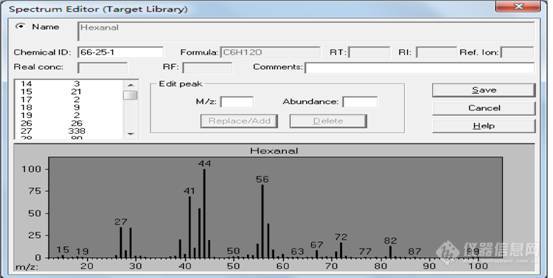

AMDIS自动化质谱图解卷积和鉴定软件在gc/MS数据处理的初步应用 (4) -如何从NIST库导入Amdis库
以前有网友问我“gc-MS软件自带的NIST库可以导入AMDIS中吗?”。我说不能直接从NIST库导入到Amdis库。后来又有网友找到文献讲可以导入,但需要从NIST Search来转换。过程大致是启动NIST MS Search程序,用name或CAS号检索到所要添加的(目标)化合物质谱图,然后利用MS Interpreter把目标化合物保存为*.msp格式文件,然后在Amdis中LibraryTransfer转换添加到自建库。
我也查阅了Amids的使用说明(AMDIS — USER GUIDE )的附录部分的8.3.2,8.6.2和8.9的相关内容。但不是很具体:
8.3.2 Library Transfer
WhenLibrary | Library Transfer is selected, a window appears to enable you to copycompounds and spectra from one library to another.
Using theeditor, data can be transferred from the source to the destination library.However, only the destination library data can be edited or deleted.
The titlebar contains the names and types of the source (From) and destination (To)libraries. The list box on the left contains the source library spectra. Thedestination library spectra are listed in the box on the right. There is a Sortpull down menu for each list box. The Add button to add a deconvoluted spectrumfrom the gc/MS data is below the source list box. At the bottom is the boxcontaining information about the highlighted spectrum (in either the source ordestination library). In the middle are the Transfer, Edit, Delete, Files,Exit and Help buttons. Again, the details are explained in 8.4 LibraryWindow Functions.
8.6.2 Create Library from NIST MS Database
The same method as discussed here can beused to create a library from any text file that conforms to the NIST fileformat, discussed briefly below (8.9 Format ofMass Spectral Transfer (MSP) File).
The NIST MS database can be used to createa Mass Spectral Transfer file. This file is created by exporting thedesired spectra from the NIST MS Search program using library tools. MassSpectral Transfer files created by the NIST MS Search program can beread by AMDIS.
To convert from either a Mass SpectralTransfer file or another library, use the Library | Library Transfermenu command. If the correct libraries are not set as the source orthe destination (the library to be built), use the Files button andselect the libraries. The Files button will also provide the option ofcreating a new library.
Highlight the spectra that you wish totransfer and select Add. Once the spectra are in the new library youwill need to specify the retention index data if it is not already present. Ifthere is retention index data for a compound in the original library, it willautomatically be set to Use for RI calibration when transferred to a CalibrationStandards Library.
8.9 Format of MassSpectral Transfer (MSP) Files
The native format which the NIST MS Search program exportsfiles in is shown below. However, as you can see from looking at the otherformats, the NIST MS Search program and AMDIS accept a number of formats.The important point is that the Name, Formula, and CAS number should be presentand the Number of Peaks needs to be specified. In general, the program willignore fields it does not understand.
The only unusual field stored in the file(ie, it is not a field name followed by a colon) is the direct output of theNIST MS Search program. The fourth line in the NIST98 example below is alist of other (mostly regulatory) databases in which the compound appears. Theonly requirement beyond this is that there must be 5 peaks on each line exceptthe last.
现整理一下具体转换过程,和大家分享一下(仅供大家参考)。
1. 从NIST Search库找到需要添加的目标化合物
1.1 启动NIST Search(直接从程序栏启动或从Agilent ChemStation菜单启动)
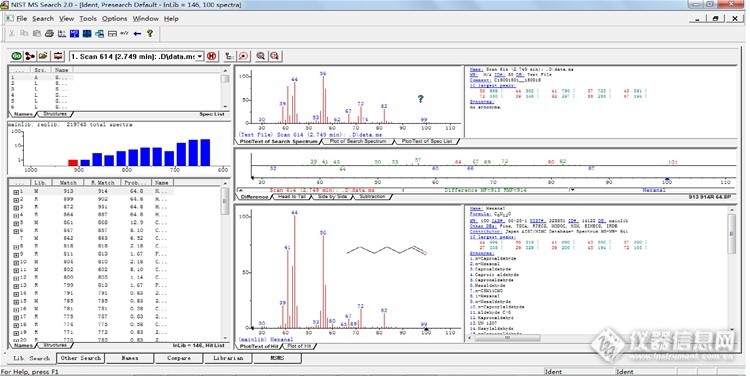

选择NIST Search库
Op tion----Library Search Option----Library
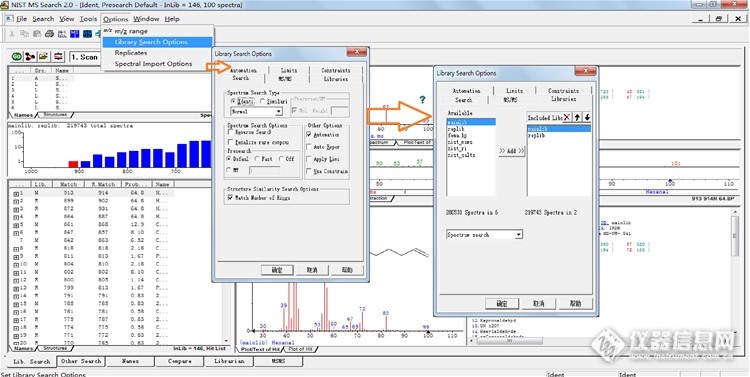


1.2在Search菜单下,用name或CAS号(或NIST Search库编号等其它形式)检索到所要添加的(目标)化合物质谱图。
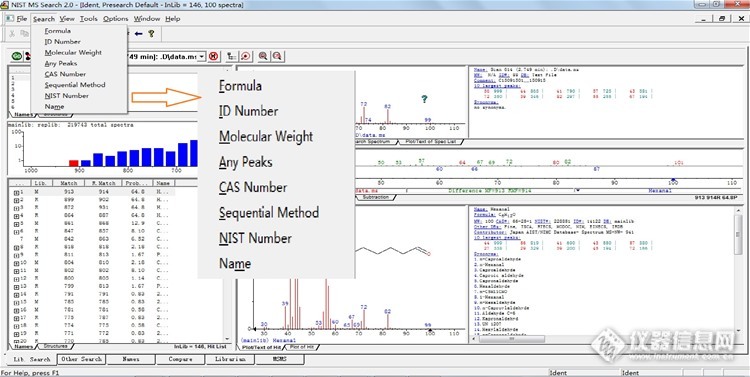

例如用Name来查找,例如正己醛,输入AlDEHYDE C6
1.3在此质谱图上面点击鼠标右键,Send To-----MS Interpreter
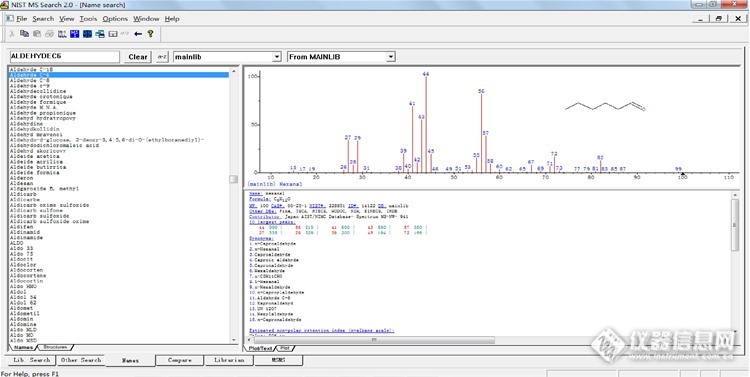


或者从Tools菜单的MS Interpreter进入也可以。
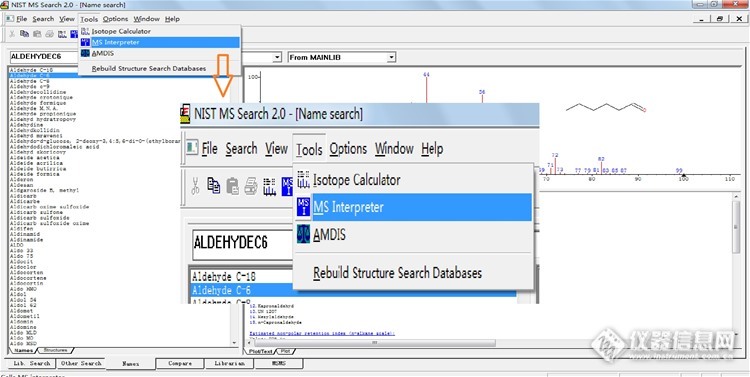

symmacros
第2楼2015/11/29
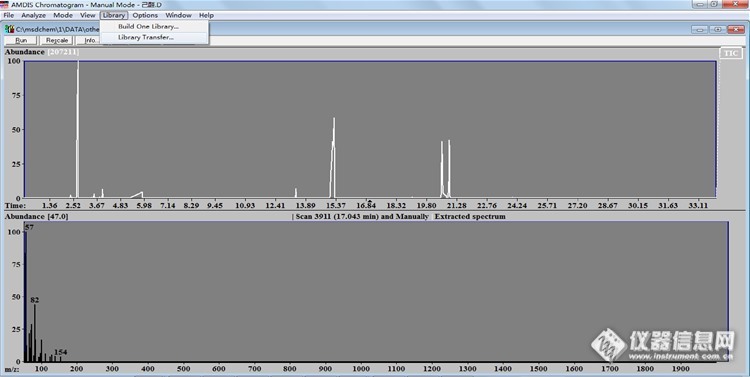 2. 用MS Interpreter把目标化合物保存为*.msp格式文件(Mass Spectral Transfer File)
2. 用MS Interpreter把目标化合物保存为*.msp格式文件(Mass Spectral Transfer File)
调用进入MS Interpreter
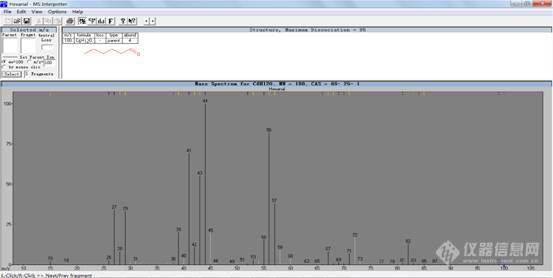
File菜单的Save as,存入Hexenal.MSP, 保存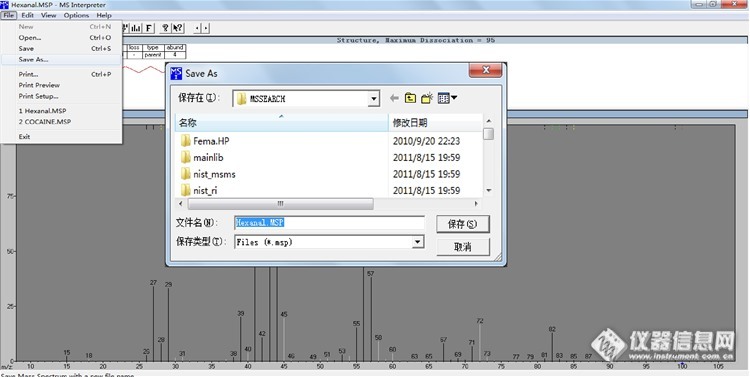
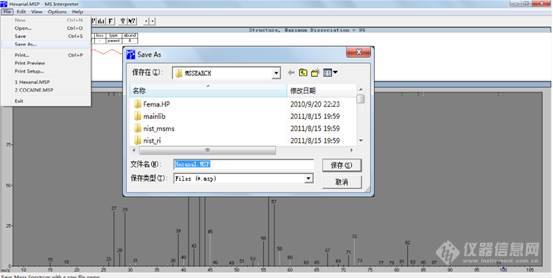
存入Hexenal.MSP, 保存。并记住保存的路径,例如默认NIST05/MSSEARCH或更改为自己喜欢的路径。
3. 在Amdis中LibraryTransfer转换添加到自建库
打开Amdis软件 (在程序栏直接启动或MS ChemStation菜单打开)
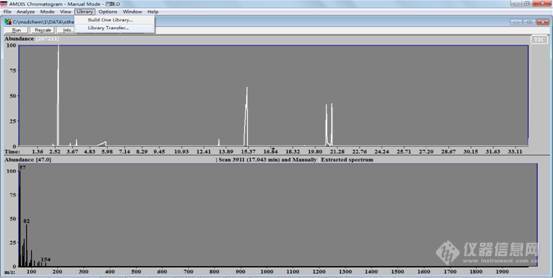
在Library菜单左面选择正确的路径和名称打开刚才的建立的hexanal.msp文件。
右边调入需要添加的自建库文件(例如jim.MSL)。
点击hexanal,按Transfer>, Exit。这样就在jim.MSL里面成功添加了己醛的谱库。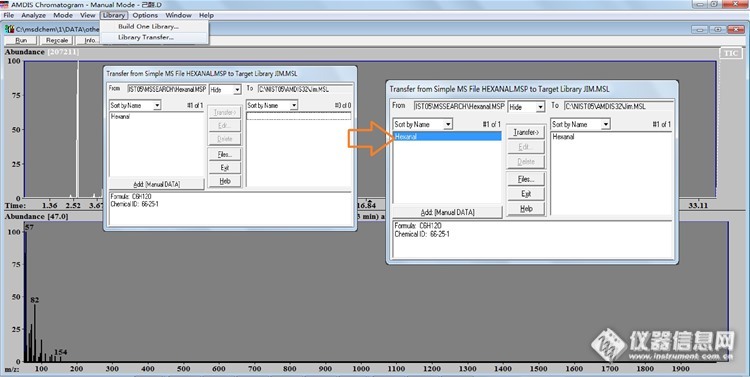
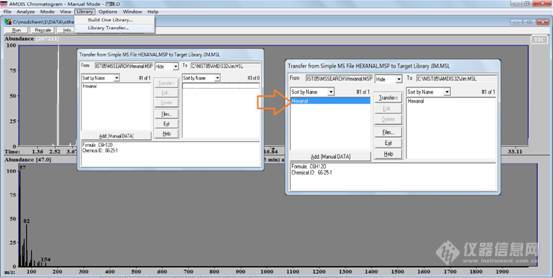
可以同时添加多个*.MSP文件到同一*.MSL文件中。
也可以建立一个新*.msl文件来转入*.msp文件。例如: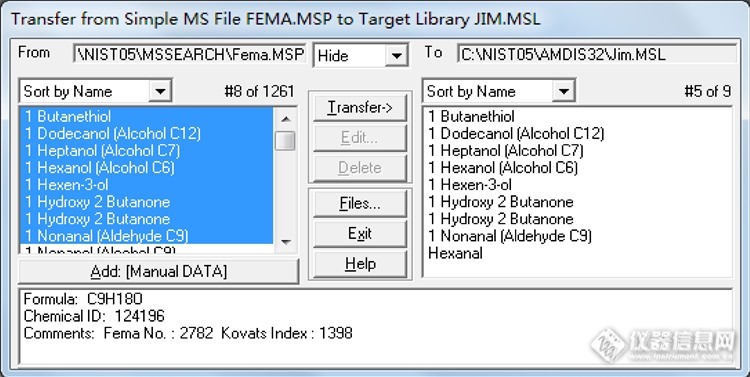

在MSL目标库化合物上面点鼠标右键出现:调用库,建新库,另存库,编辑质谱图,删去质谱图等功能。
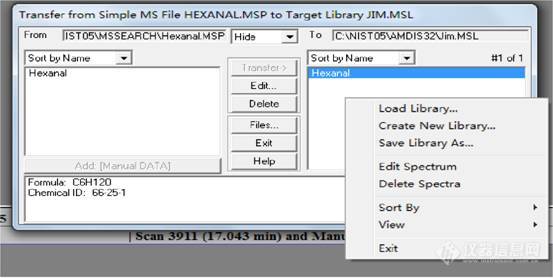
例如编辑质谱图,可以输入或更改相关质谱信息(这里就不一一说明了)
